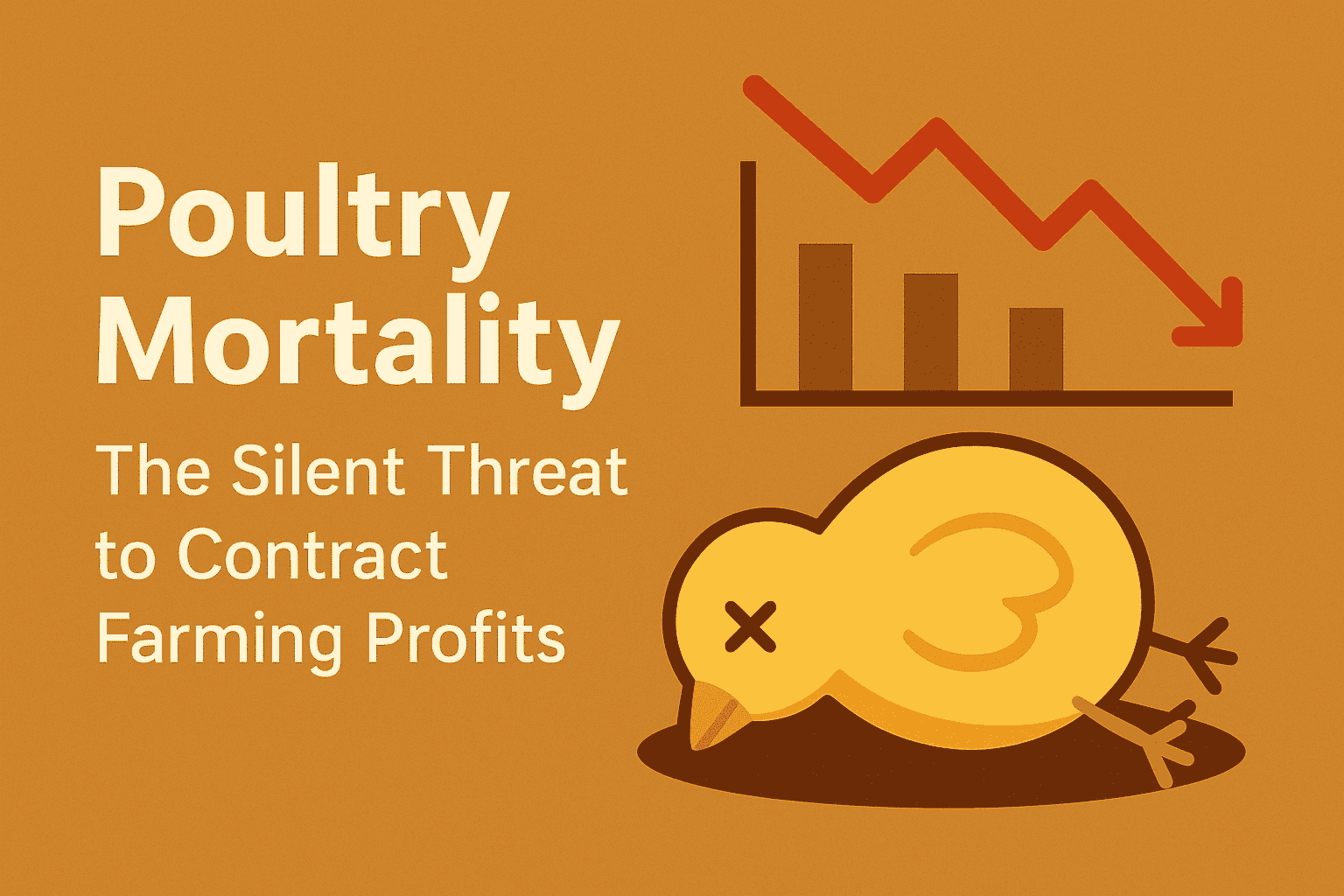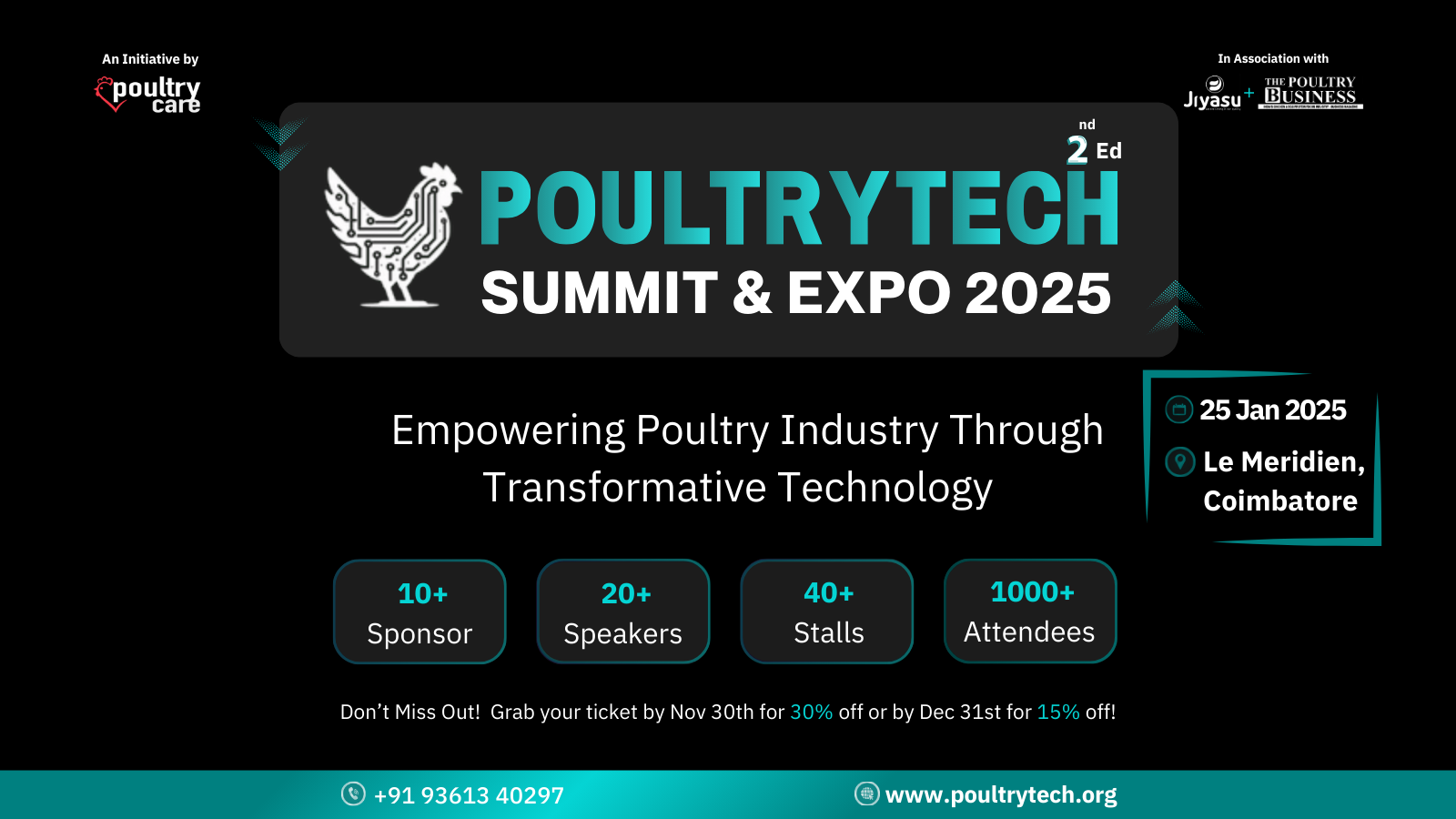In poultry farming, success is not measured only by the number of chicks placed or the volume of feed consumed. The true measure of profitability lies in how many birds survive and grow to their full potential. Poultry mortality is one of the most persistent and silent threats faced by contract broiler farming integrators. Even when the percentage appears small, the impact across multiple farms and cycles can result in significant profit erosion.
For integrators managing dozens of farms, mortality is more than just a statistic on a report. It is a reflection of operational discipline, farmer motivation, and overall efficiency. Left uncontrolled, it reduces margins, damages trust, and creates hidden costs that continue to grow batch after batch.
Why Poultry Mortality Hurts More Than You Realize
Mortality is not just the loss of birds. Each bird lost represents wasted feed, unused medicine, and unrealized profit. Over time, these hidden costs add up to large financial gaps that may not be immediately visible. Integrators often only realize the extent of the problem at the end of the production cycle, when the financial reports fail to match expectations.
The impact is also emotional. Farmers invest their energy in caring for the flock, and when mortality rises, their confidence in the process is shaken. Integrators who cannot address this quickly risk losing not only money but also the loyalty of their farmers.
Common Factors Behind High Mortality
The reasons behind poultry mortality are rarely caused by a single issue. Instead, it is usually the combination of multiple small lapses that create the problem. Weak biosecurity allows pathogens to spread from one shed to another. Delayed or skipped farm visits mean early warning signs go unnoticed. Vaccines that are poorly handled or improperly administered fail to protect the flock. Feed and water contamination weaken immunity, creating an environment where disease spreads quickly.
In many cases, mortality is not caused by negligence alone but by the lack of consistent monitoring across farms. Integrators managing a wide network may find it difficult to enforce discipline equally in every location. The result is variability in performance, with some farms excelling while others quietly drain profit.
Moving From Reactive to Proactive Control
Traditional methods of tracking mortality through paper records or delayed reports are no longer enough. By the time problems are noticed, the losses are already significant. Modern poultry farming requires a proactive approach where integrators are alerted to issues as they happen.
This is where digital platforms such as PoultryCare ERP provide real value. Mortality alerts notify supervisors the moment death counts rise above safe thresholds. This allows immediate investigation and corrective action, rather than waiting until the end of the day or week. Digital farm visit records make it impossible to skip or forget a visit, ensuring that no farm is left unchecked. Disease patterns can be tracked across farms, giving integrators a broader picture of risk. By shifting from reactive to proactive management, mortality becomes a controlled factor rather than an unpredictable leak.
The Role of Farmer Engagement
Controlling mortality is not only about technology. It also depends on how integrators engage with farmers. When data is shared transparently, farmers understand the importance of discipline in daily practices such as cleaning, feed storage, and vaccination. Alerts do not just inform supervisors; they empower farmers by showing that their effort is supported by an intelligent system.
When farmers feel supported, their motivation rises. This reduces negligence and encourages them to take ownership of results. A motivated farmer, backed by a strong integrator system, is far more likely to achieve low mortality and better overall flock health.
Real-World Success Insight
In Palladam, one of the largest poultry belts in Tamil Nadu, an integrator faced repeated setbacks from high mortality. Losses kept piling up, and traditional supervision methods were not enough to address the problem. After adopting a digital ERP solution, mortality tracking became immediate. Alerts were generated automatically, farm visits were monitored without gaps, and supervisors could intervene early.
Within a short time, mortality levels dropped to manageable limits, and the financial turnaround was visible. Farmers felt more confident, operations became smoother, and profits were no longer eaten away by hidden leaks. What was once the biggest weakness became a defining strength for that integrator’s reputation.
Connecting Mortality to Other Profit Leaks
Mortality does not exist in isolation. It is closely tied to feed conversion ratio (FCR), placement readiness, and overall cost per kilogram of production. Every bird lost disrupts feed planning, reduces efficiency, and complicates cost tracking. By controlling mortality, integrators also create a stronger base for managing other key performance areas.
For deeper insights on how mortality connects to FCR challenges, see our related blog on Improving Feed Conversion in Contract Broiler Farming.
The Way Forward
The poultry industry is moving toward data-driven decision-making. Integrators who rely solely on manual tracking will find themselves at a disadvantage compared to those who embrace digital tools. Poultry mortality, once considered an unavoidable challenge, is now something that can be monitored, predicted, and controlled with precision.
External studies, such as those published by the Food and Agriculture Organization (FAO), emphasize that improved data collection and biosecurity practices are central to reducing mortality in poultry production. Integrators who adopt these methods early will be best positioned to scale and remain competitive.
Conclusion
Poultry mortality is more than just a daily statistic. It represents hidden costs, farmer morale, and overall profitability. For integrators, the challenge is not simply to record mortality but to control it in real time across every farm they manage. With smarter systems, better engagement, and proactive alerts, mortality shifts from being a silent profit leak into a controlled performance metric.
👉 Take the next step toward reducing losses and protecting your profits. Book a demo with PoultryCare ERP today and see how mortality can be brought under control.




